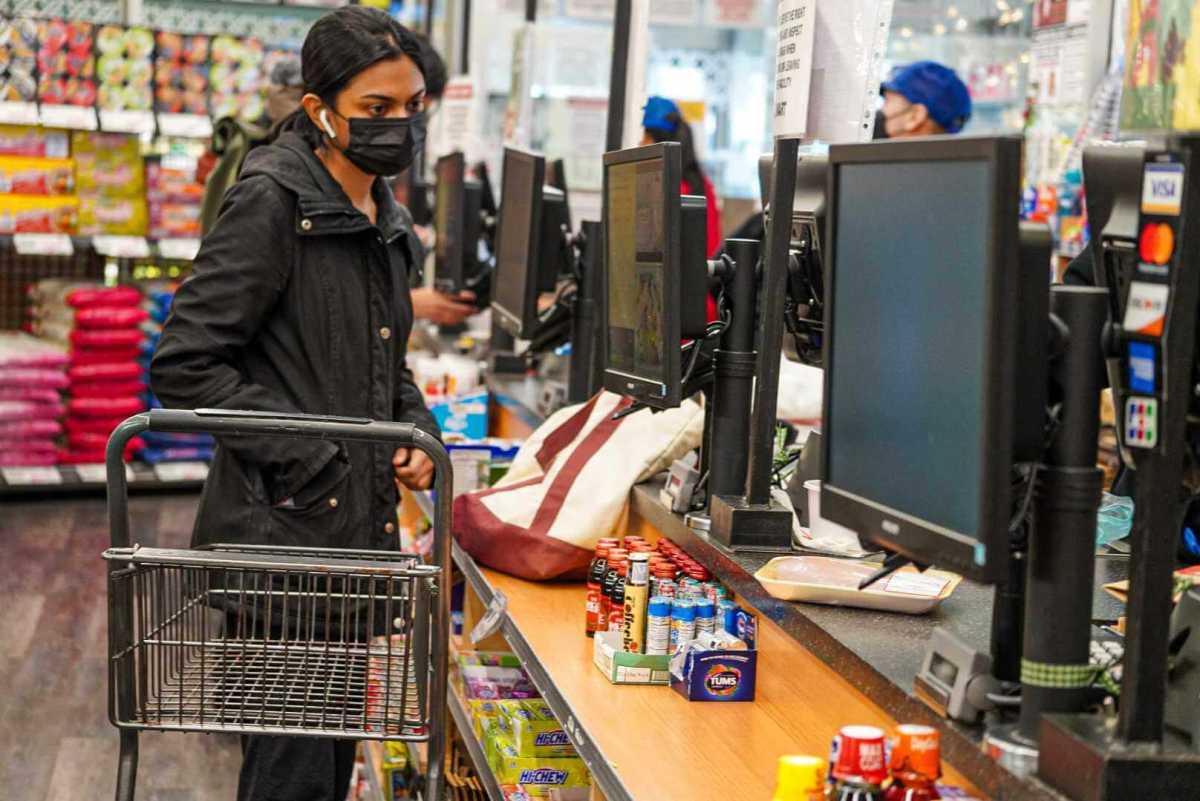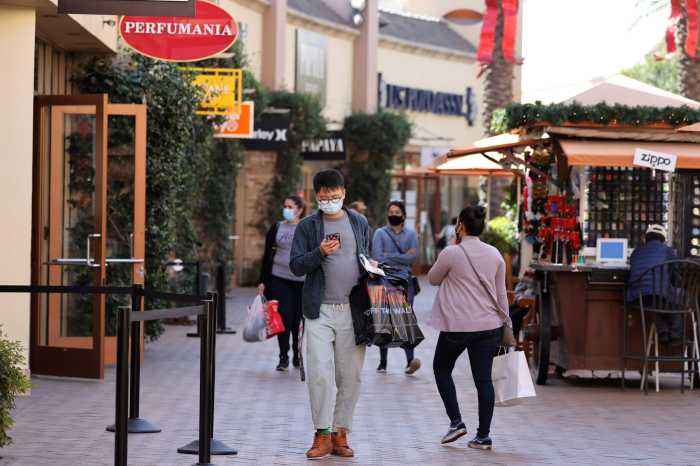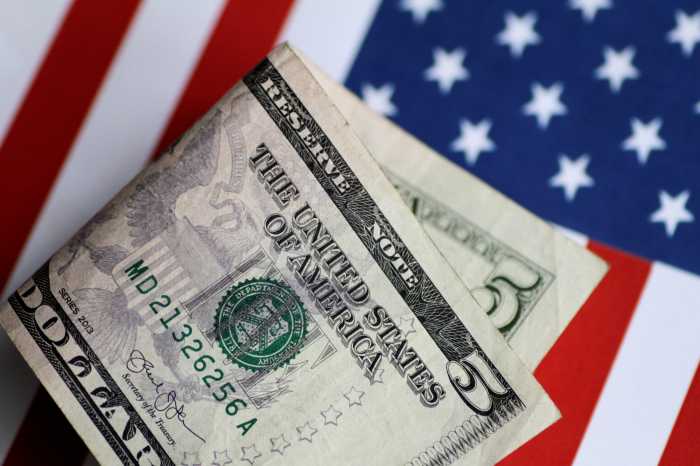Editor’s note: Picking up where we left off on Feb. 24, amNewYork Metro presents the second part in our “Everything is Too Damn High” series chronicling how New Yorkers are coping with higher prices at the pump, in their home and at the supermarket checkout line.
When the coronavirus pandemic first gripped New York City last year, the grocery store became the sole destination for many New Yorkers shut up at home during the lockdown. Many saw prices increase as shoppers cleared out store’s stock of the essentials — bread, eggs, and, of course, toilet paper.
When lockdowns eased and things started to return to “normal,” so did the amount of paper goods and milk on the shelves. The price of those goods, however, hasn’t. Supply chain slowdowns and labor shortages brought on by the pandemic have caused inflation rates in the U.S. to soar to their highest in 40 years, and the weekly trip to the grocery store has only gotten more painful over the last year.
Nationwide, the Consumer Price Index, which measures the price of goods typically purchased by American households, shows that the cost of “food at home” has risen 7.4 percent since January 2021.
Since the 2008 financial crisis, inflation has been well below the norm of the 2 percent annual increase targeted by the Federal Reserve Bank, even though 3 to 5 percent per year was considered generally acceptable prior to that point, said Merih Uctum, economics professor at Brooklyn College, via email.
Anything above 5 percent is worrying to policymakers, Uctum said.
Closer to home, prices were even higher — in the New York, Newark, and Jersey City area, the price of groceries rose 1.2 percent in January and 7.6 percent in the last year, with the cost of meat, poultry, fish and eggs up 16 percent compared to this time last year. The dramatic increase has some shoppers setting their usual staples back on the shelves.
‘You’ve gotta adapt, or you’re gonna starve’
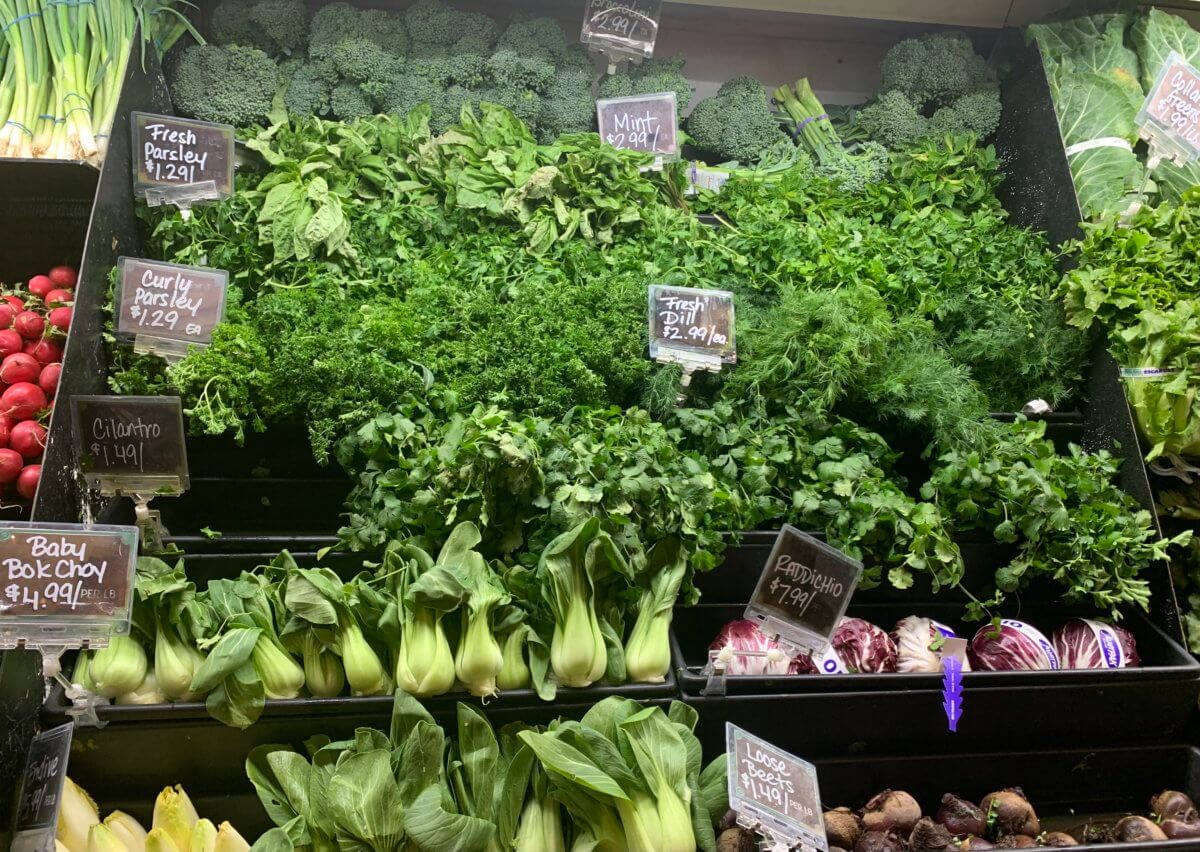
On a quiet afternoon at the NYC Fresh Market supermarket on Myrtle Avenue in Downtown Brooklyn, Tonya Trossi and Raymond Rebollo sorted through packs of chicken breasts, exclaiming at the prices.
“It’s inflation!” Rebollo remarked, as the pair put another package back down on the shelf.
Grocery shopping for their family of four has become more difficult as the cost of food — especially meat — has skyrocketed, Trossi said.
“One thing that we noticed is that sometimes the meat’s not as fresh as it used to be, Rebello said. “We have to look more in different locations to try to get some. But the prices doesn’t change whether the meat is good or bad, it’s still the same.”
Fresh Market was their second supermarket of the day. At the first, a Bravo Supermarket nearby, the chicken they needed was more than $9, and had expired two days before, Trossi said. At Fresh Market, 2.41 lbs of chicken breasts — a pack of three — was a whopping $15.16, and just over a pound of ground beef sold for nearly $12.
While the price of meat seemed to have risen the most, the Trossi and Rebello have also balked at the price of rice and cooking oil, and have started getting everything they can in bulk at BJ’s.
“Everything went up,” Rebello said. “Clothes, sneakers, everything, you name it, it’s not just food. But it hurts more when it’s food, because you’re trying to get the good value like you used to. You’ve got to adapt to it, or you’re going to starve.”
Shopping around for a deal
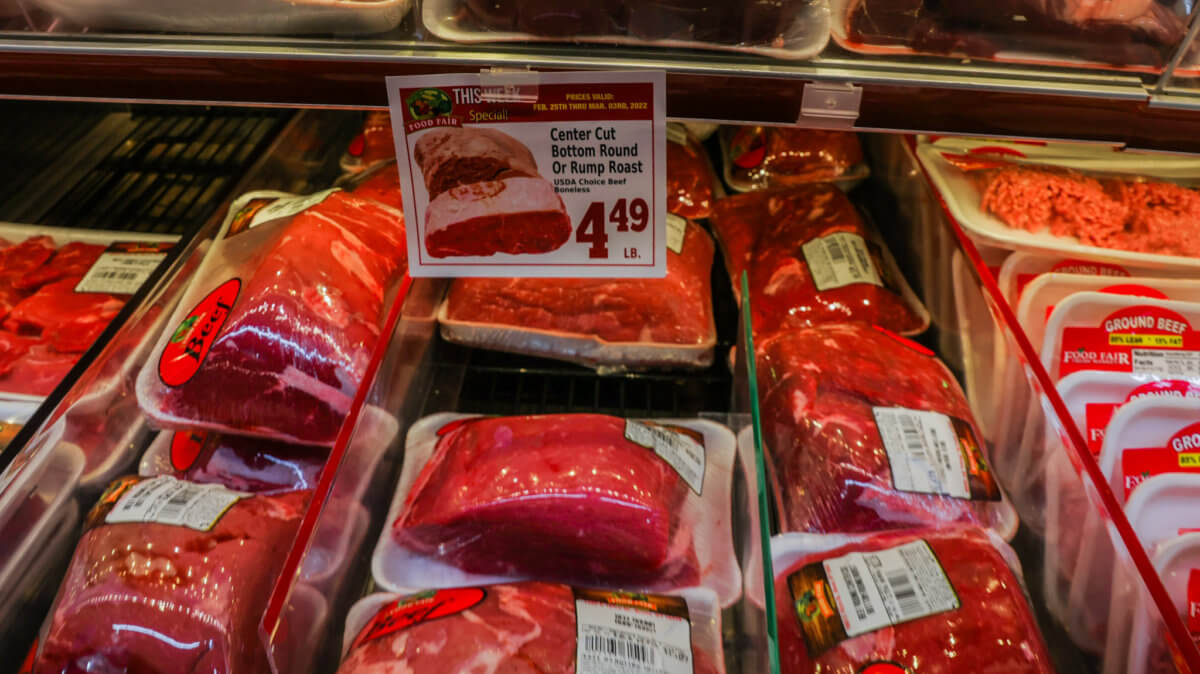
As inflation is raising the cost of food items at supermarkets, some residents in Forest Hills say they are cutting down their shopping lists and strategizing on how to save more money when it comes to buying groceries.
A few months ago, Heather W. noticed an increase in the cost of produce and other food items that she usually buys at the grocery store.
“I went shopping yesterday, and a loaf of bread that was $1.99 for quite some time is now $2.49. I was dumbfounded when I saw that,” Heather told QNS. “A bag of tomatoes has gone up from $1.99 to $2.49, and a bag of potato chips also went up from $1.99 to $2.49.”
According to Heather, who lives with a roommate and does her own shopping, her monthly budget for groceries is more than $200. She goes grocery shopping at least once a week to buy fresh produce.
“Depending on what I need, I’ll go to three main grocery stores: Trader Joe’s, Whole Foods and ShopRite. My main staples that I get every week is an organic bag of salad, tomatoes, carrots and celery. For other items I’ll change my weekly list depending on what’s on sale at Whole Foods and ShopRite,” Heather said.
In order to save money, it’s important for Heather to plan her budget accordingly, and to buy items that are on sale — such as toilet paper and paper towels — rather than buying in bulk, she said.
“I’m always on the lookout for coupons, even if I go to a specific website and print on occasion to use at the grocery store,” Heather said. “I’m not buying as many things as I normally would at the grocery store, and it’s unfortunate what is going on. Companies are extorting people and taking advantage of this time. I think in their mind, they’re thinking, ‘well, the general consumer already knows prices are going up; we’ll just knock it up a little bit more.’ I’ve heard the news that inflation is at 7%, 7.5%, but what I’m seeing at the grocery store is much more than that.”
The hungriest borough
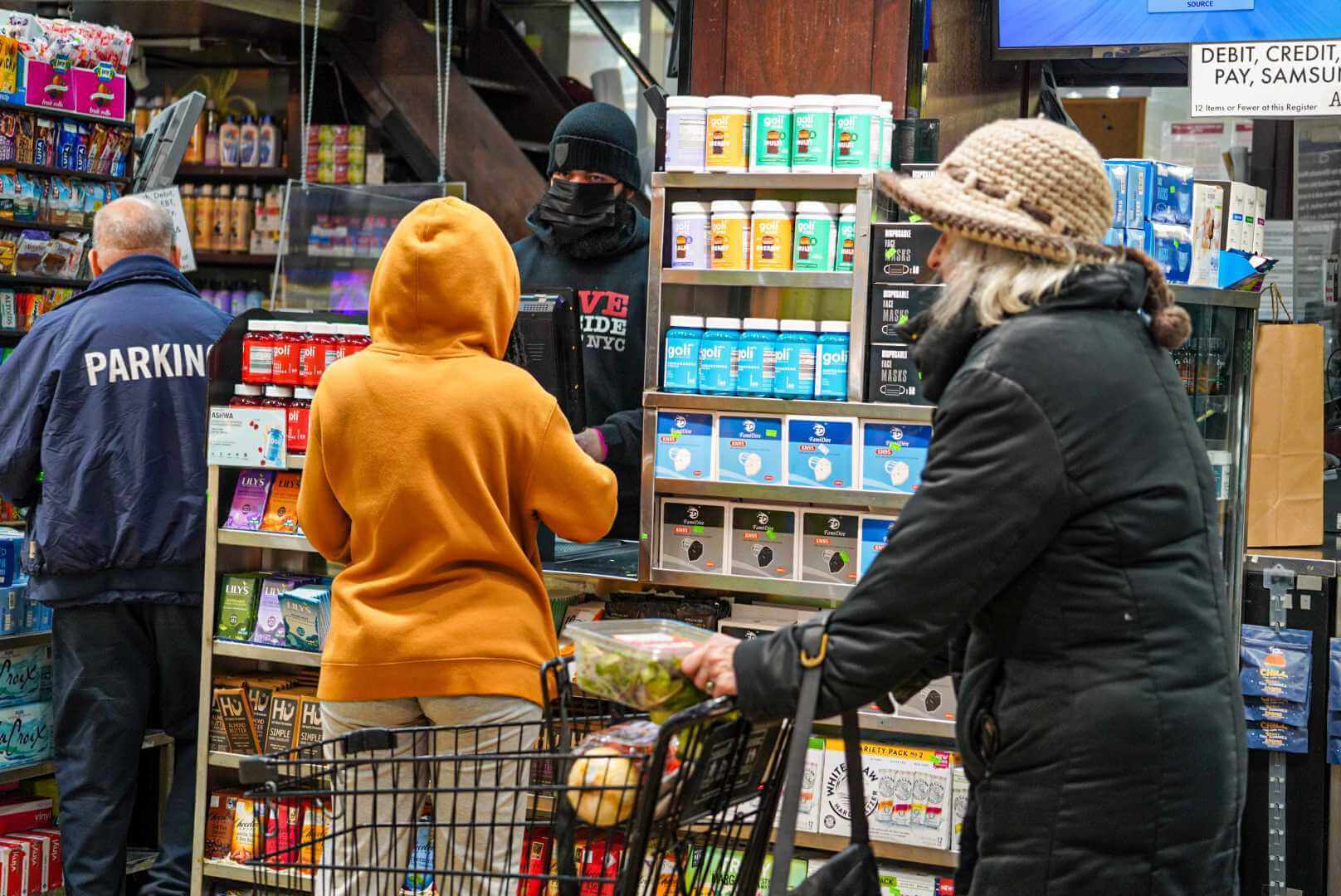
In the Bronx, which is the city’s “hungriest borough” with 1 in 4 residents experiencing food insecurity — rising food prices is another hurdle to overcome for struggling families.
“We’re kind of priced out of the packaged meats, so you gotta start looking at the canned meats and the SPAMs to get by,” said Gloria Rodriguez, a South Bronx native who regularly shops at C-Town Supermarket on Southern Boulevard. “I’ve got eight mouths to feed, not including my own, and making minimum wage ,it’s heartbreaking that I can’t afford to give my family a steak or chicken dinner every night.”
In the aisles of some Bronx supermarkets, consumers aren’t balking yet at paying a little more for those chicken nuggets.
“Some people are going to be more price-conscious, some people are going to pay for what they believe is the best quality item. There’s always a variety of consumer behaviors,” said Martin Kohli, regional economist for the U.S. Bureau of Labor Statistics. “We have a sense that some will make substitutions, and they might eat chicken or a hamburger, if they can’t afford the steak. But it’s hard to tell if these changes are seismic enough to see a downward shift in consumer behavior.”
For Bronxites who cannot afford to pay $5 or more for a slab of meat, or leverage half of their minimum-wage paycheck on overpriced goods, it’s fueled a rise and need for food pantries.
Of the NYC food pantry users surveyed between Dec. 27 and 31, 2021, 96% of those surveyed reported they noticed higher food prices, and 87% reported they changed what food they bought because of higher prices and that they expect to have to visit food pantries more often because of higher prices.
City Harvest, New York’s first and largest food rescue organization, plans to deliver about 300,000 pounds of food each day to the nearly 2.4 million New Yorkers struggling to make ends meet.
“New York City’s food insecurity crisis long predates the COVID-19 pandemic,” said Jilly Stephens, CEO of City Harvest. “Millions of people across the city already struggled to feed themselves and their families, and rising food prices have only exacerbated those challenges.”
Next week’s “Everything is Too Damn High” story will focus on the costs of housing in New York City, and higher prices being paid for utilities.



